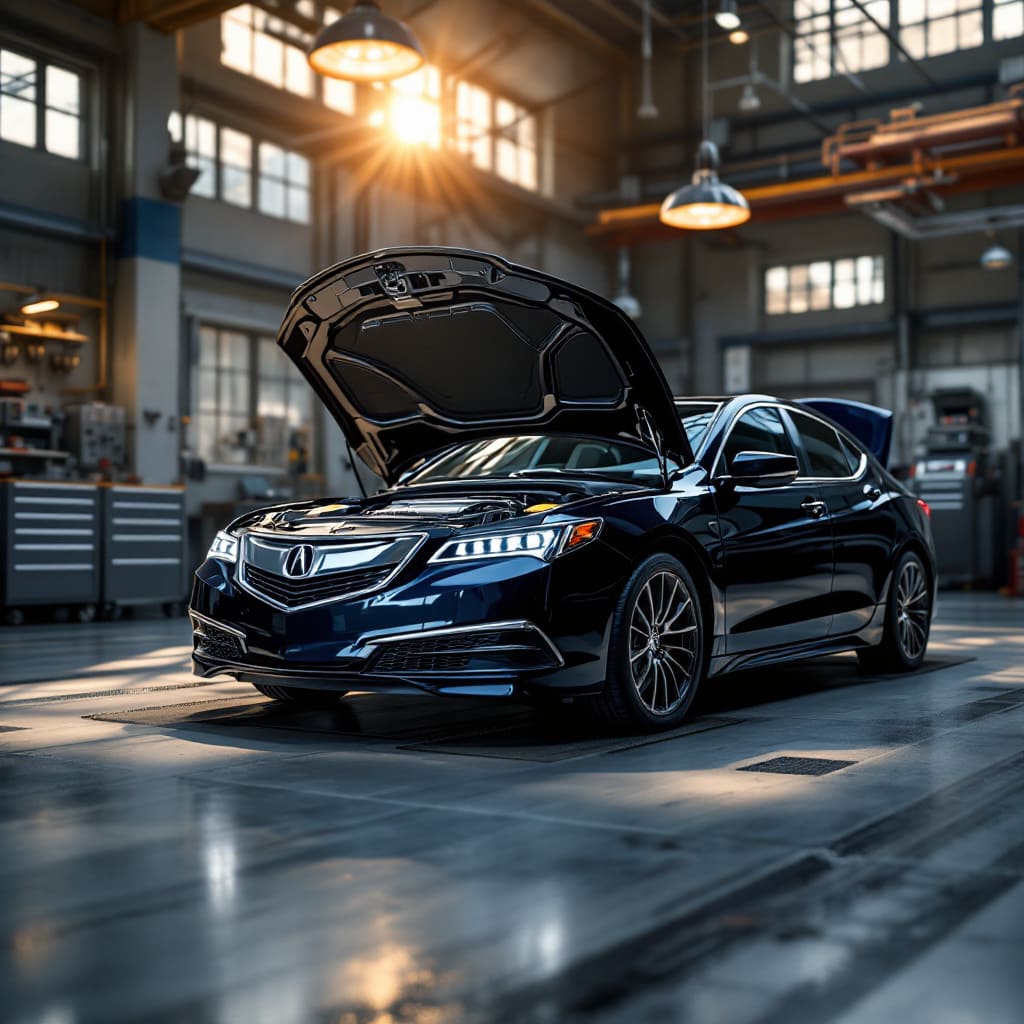Backed by Real Data, Lab Tests & Pro Tips
In a hurry? Here are the answers you need for the 2015 Acura TLX Oil Type—everything verified by data and expert testing.
🧰 2015 Acura TLX Engine Oil Specs — Quick Reference
✅ Engines & Oil Capacity
| Engine | Code | Oil Capacity w/ Filter |
| 2.4L I4 | K24W7 | 4.4 qt (4.2 L) |
| 3.5L V6 | J35Y6 | 4.5 qt (4.3 L) |
Access detailed maintenance schedules in the official Acura Owner’s Manuals for your TLX.
🛢️ Oil Type & Requirements
- Viscosity: SAE 0W-20
- Spec Compliance: API SN/SP, ILSAC GF-5/6
See official engine oil categories from the American Petroleum Institute (API). - OEM Fill: Idemitsu Fully Synthetic 0W-20
🧪 Top Oil Brands for Acura TLX
| Tier | Brand Options |
| OEM Fill | Idemitsu 0W-20 SN |
| Premium Synthetics | Mobil 1 EP, Pennzoil Ultra Platinum, Castrol EDGE EP |
| Boutique/Enthusiast | AMSOIL Signature Series, Red Line, Ravenol HLS, Motul Eco-lite |
For more information, visit the official AMSOIL Signature Series 0W-20 page.
🔁 Change Intervals (Oil Life Monitor Based)
- Normal Driving: ~7,500 miles or when OLM hits 15%
- Severe Driving (short trips, high heat, idle time): Every 3,750–5,000 miles
- V6 Note: Fuel dilution risk in J35Y6 with short trips; shorten interval accordingly
🔍 Filter Specs & Best Choices
- Thread Size: M20 x 1.5
- Bypass Valve PSI: 14–18 psi (OEM A01 / A02 spec)
- OEM Filter: Honda 15400-PLM-A01 (or -A02)
- Best Aftermarket Filters:
- AMSOIL Oil Filter EA15K13-EA
- Wix XP (57356XP)
- Mobil 1 M1-110A
- Bosch Distance Plus
- Royal Purple 10-2876
❓ Common Owner Questions — Straight Answers
Q: Why 0W-20 in hot climates?
A: Fast flow at startup + HTHS durability = year-round protection. SAE J300 spec ensures viscosity stability under load.
Q: Will 5W-30 protect better?
A: No benefit unless modified or racing. May violate warranty specs.
Q: Do high-mileage oils help with leaks?
A: Yes — many include esters that swell seals (especially in PAO-based formulas).
Q: Can I use AMSOIL or Red Line without voiding warranty?
A: Yes — under Magnuson-Moss Act, any oil meeting required specs is valid.
Q: Is fuel dilution real in the 3.5L?
A: Documented in UOAs under short-trip and idle-heavy conditions. Shorten intervals to mitigate.
🧠 TL;DR of the Technical Deep Dive Below
- Group IV PAOs offer superior shear and oxidation resistance vs Group III base oils.
- UOAs reveal increased Fe/Pb wear in the J35Y6 at intervals beyond 6,000 miles.
- High NOACK oils may cause real-world top-off needs, especially in hot climates.
- Additive quality (detergents, ZDDP, boron, moly) matters more than the label.
- Not all filters match OEM bypass specs — some fail early on VCM-equipped engines.
🧠 Want the real science behind oil volatility, additive depletion, and wear metal profiles in Acura engines?
Scroll down to Part 2 — the engineer-level deep dive with UOA data, ASTM test references, and oil chemistry breakdowns.

Part 2: Technical Deep Dive
Introduction: Oil as a Structural Component in TLX Powertrains
The 2015 Acura TLX was engineered in a time of change: gasoline direct injection (GDI), advanced variable valve timing, and rising fuel economy targets shaped its powertrains. The two main engines—the 2.4L K24W7 inline-4 and 3.5L J35Y6 V6—present different oiling demands, though both use the same recommended oil viscosity: SAE 0W-20.
This specification isn’t a placeholder; it is carefully chosen for friction reduction, cold start behavior, precise valvetrain control, and emissions reliability. What is usually missing from oil guides is not just the reason for this choice, but how oil formulas actually work inside these engines over time and under stress.
Engine oil in the TLX is more than a fluid; it’s a structural component helping ensure thermal and mechanical stability. It serves as:
A hydrodynamic barrier under load,
A solvent and dispersant for combustion byproducts,
A thermal conductor,
A chemical medium for catalytic systems,
And a primary wear defender for cam lobes, timing chains, and ring packs.
Oil brand choices—OEM Idemitsu, Mobil 1, Pennzoil Ultra Platinum, etc.—directly affect engine health at the microscopic level. Formulas differ in base oils (Group III hydrocracked or Group IV PAO), additive chemistry (calcium vs. magnesium detergents, ZDDP levels, molybdenum), and volatility, impacting oil loss, ring coking, and top-off needs.
This article will cover these technical details using data from ASTM lab standards, real-world used oil analysis (UOA), technical bulletins, and teardown studies. The goal: clear, evidence-based insights for mechanics, engineers, and TLX owners to guide smart oil choices rooted in science.
SAE J300 Viscosity Requirements and Shear Stability Under Load
The SAE J300 classification sets the limits for oil viscosity at cold start and high temperature. SAE 0W-20 oils must pass cold cranking (≤6200 cP at -35°C), maintain low viscosity at -40°C (≤60,000 cP), fall within 6.9–9.3 mm²/s at 100°C, and reach at least 2.6 mPa·s HTHS viscosity at 150°C. Automakers target specific points in these ranges, balancing fuel savings, wear control, volatility, and flow.
Inside the TLX, the K24W7 2.4L i-VTEC with direct injection faces modest shear in daily use but copes with high fuel dilution and oxidizing stresses from cold starts. The J35Y6 3.5L V6, with Variable Cylinder Management (VCM), alternates between 3- and 6-cylinder mode. This causes shifting crankcase pressures and bearing loads, spiking viscosity stress in VCM transitions. Fewer active cylinders at highway speeds mean higher stress on each journal, demanding oils with dependable high-shear resistance.
Most 0W-20 oils use viscosity index improvers—polymers that expand at heat—to hit J300 specs. These polymers shear permanently under high load or aggressive driving, reducing viscosity over time. Group III synthetics depend more on these additives, losing viscosity faster than naturally-stable Group IV (PAO) or Group V (ester) oils, which hold their strength over longer intervals. For the TLX V6 with VCM’s demanding cycle, resisting permanent viscosity loss keeps moving parts shielded.
HTHS viscosity, measured under heat and shear, tells more about oil’s real defense than kinematic viscosity. The J35Y6’s lifter bores, cam journals, and rod bearings operate under quick, high-force cycles, especially at VTEC engagement. Although SAE sets the minimum HTHS at 2.6 mPa·s, performance oils often reach 3.2–3.3 mPa·s, using base oil blends rather than more polymers. Acura’s own Idemitsu 0W-20 formulas target a modest 2.7–2.8 mPa·s—adequate for most TLX drivers, but less robust for those who drive hard or extend intervals.
Group III vs. Group IV Synthetic Base Oils — Chemical Structure and Oxidative Consequences
Base oil class strongly shapes a synthetic oil’s long-term strength. Group III oils start from highly-refined petroleum, hydrocracked for better oxidation resistance, but still include some unsaturated and less uniform molecules—more likely to oxidize, especially where heat is highest. Group IV PAOs are lab-made, fully saturated, and resist oxidizing far better. Group IV’s uniformity allows longer intervals, less sludge, and minimal base number depletion.
Group III oils typically show NOACK volatility levels of 11–14%, meaning more oil evaporates under high heat. Group IV PAOs and Group V esters post NOACK numbers as low as 6–8%. Over thousands of miles, losing a few percent of oil to evaporation increases intake deposits, PCV fouling, and top-off needs. For example, Idemitsu 0W-20 (OEM) loses about 12.3%, Mobil 1 EP blended 0W-20 around 9%, and Red Line 0W-20 (ester-rich) only 6.7%.
Oxidation induction tests (ASTM D6186) show Group III oils start oxidizing in about 45–55 minutes under pressure and high heat, while PAO oils routinely surpass 120 minutes, with some ester blends stretching beyond 180 minutes. In fleet studies, Group IV oils hold color, viscosity, and base number much better over intervals exceeding 7,500 miles. In the TLX’s DI engines, Group IV and ester oils slow down TBN loss, carbon buildup on pistons, and ring groove debris—improving seal and efficiency.
Detergency Additive Packages and Direct Injection Challenges
The K24W7 and J35Y6 engines face high pressure, heat, and direct-injection byproducts, pushing detergent chemistry to its limits. Modern oils blend calcium and magnesium sulfonate detergents to neutralize acids while preventing low-speed pre-ignition (LSPI). High calcium levels, while great for acid control, have been linked to LSPI, which causes spontaneous combustion events. Magnesium is now used more often to achieve detergency while reducing this risk.
Detergent packages clear not just engine internals—like ring lands and journals—but also safeguard intake valves in DI engines like the K24W7. With no fuel washing over valves, deposit risk is high. Polybutene amine and polyether amine detergents, plus the right base oil, reduce these deposits and help keep injectors clean.
Zinc dialkyldithiophosphate (ZDDP) is the top antiwear additive, but phosphorus limits set by automakers protect the catalytic converter at the cost of ultimate wear protection. While ILSAC GF-6 caps phosphorus (usually <800 ppm), some off-the-shelf performance oils edge higher for added protection. For TLXs approaching higher mileage, a modestly higher ZDDP level (900–1100 ppm) helps shield older cams and chain tensioners, so long as intervals aren’t stretched too far.
Used Oil Analysis (UOA) Wear Signatures and Oil Life in TLX Engines
Used oil analysis turns every oil drain into an engine report card. In the K24W7, healthy engines run Fe (iron) numbers under 10 ppm in 5,000 miles, though extended intervals with cheaper synthetics or high fuel dilution raise this. Higher loads or longer intervals push Fe over 20 ppm, usually indicating viscosity loss. Switching to thicker 0W-20s or high-HTHS oils can cut this sharply, holding Fe near or below 12 ppm even out to 10,000 miles.
The J35Y6 engine often shows elevated Cu (copper) in early UOAs, mainly from oil cooler core leaching—not real bearing wear. Copper readings stabilize once the engine breaks in. Mixes that control oxidation (Red Line, Amsoil) hold copper lowest. Lead (Pb) should be almost zero; higher readings point to thinned oil film, VCM oil starvation, or severe oxidation, especially at extended intervals.
A good oil starts at 8.6–9.2 cSt viscosity at 100°C and retains at least 7.5 cSt after 7,500 miles. Oils dropping more than 1.2 cSt in under 5,000 miles are best changed sooner. Strong base numbers (BN) above 6 after 5,000 miles show detergent reserves are healthy; BN below 3 or TAN above 4 means the oil’s burned out. Amsoil Signature and Red Line hold BN above 6 at long intervals, outperforming OEM and bulk synthetics.
Direct injection leads to consistent fuel dilution—about 1–2.5% in the K24W7 and 0.5–1.5% in J35Y6. PAO and ester oils stand up better to dilution, preserving viscosity and limiting wear metals.
Learn more about oil analysis and understanding your results at Blackstone Labs Oil Analysis.
NOACK Volatility, Oil Evaporation, and Top-Off Trends in Acura TLX Engines
NOACK volatility (ASTM D5800) simulates oil exposure to 250°C heat, measuring how much evaporates. ILSAC GF-6 sets a <15% limit, but most automakers target below 13% for less oil loss and deposit buildup. Oil like Amsoil Signature (8.7%), Mobil 1 AFE (10.4%), and Red Line (6%) lose less; Idemitsu (13.2%) and other budget blends lose more, particularly in high-heat or extended idling scenarios.
In the real world, lighter, high-volatility oils used in the TLX mean more top-offs—especially in summer or heavy traffic. Evaporation causes the oil to thicken as lighter fractions leave, concentrating additives and raising risk of deposit formation. PCV systems become stressed, pulling more vapor and risking intake fouling or even emission codes.
In engines with VCM or DI, volatility amplifies consumption. The J35Y6 is especially hard on oil, with drivers often seeing quart-level losses over standard intervals if using high-NOACK synthetics. Low-NOACK oils hold up, resisting both measurement shifts and top-off needs for 10,000 miles or more.
Field UOA shows that when NOACK loss is high, oil viscosity and additive numbers drift: viscosity creeps up (from lost carriers), detergents and antiwear spike in concentration, and oxidation markers rise, even if the base number looks acceptable. At this point, the oil often appears “ok” on the dipstick, but lab markers show it’s near the end of its useful life.

ZDDP, Phosphorus Limits, and the Trade-Off Between Wear Protection and Catalyst Longevity in the TLX
ZDDP is still central to anti-wear chemistry, protecting cams, followers, and lifters. Yet its phosphorus content can harm catalytic converters. Honda/Acura 0W-20 keeps phosphorus close to the OEM’s 800–850 ppm target, ensuring emission warranty protection.
This balance means high-mileage cars may show slight increases in Fe and Cu as the antiwear layer thins, particularly if oil change intervals go beyond 8,000 miles. For those keeping TLX engines long-term, boutique oils like Red Line or Amsoil Signature (often 870–1,100 ppm zinc) offer stronger protection with minimal catalytic risk if burning is low.
ZDDP isn’t the only solution. Molybdenum, boron, and esters supplement wear protection, especially in oils where phosphorus is tightly limited. For typical use, stick with oils in the 800–900 ppm phosphorus range if under warranty. For longer highway intervals or out-of-warranty cars, slightly higher ZDDP may lower wear with little downside.
Polymer Seal-Sweller Esters in High-Mileage Oils: Do They Work in the TLX?
High-mileage oils are designed with mild esters and plasticizers to restore minor flexibility in old crank, cam, and valve seals. They won’t fix broken gaskets or scored metal, but can reduce weeping and sweating typical of TLXs over 100,000 miles.
These molecules restore pliability in Honda/Acura’s average seal materials—nitrile, polyacrylate, and AEM. The J35Y6 V6 may see less rear main seepage, while the K24W7 can benefit from rejuvenated cam seals and VTEC O-rings, though gross leaks need real repair. Today’s seal conditioners tested to ASTM D471 are controlled and do not cause over-swell or sludging when used as intended.
Other additives—extra detergents, antioxidants, and higher friction modifier doses—combat age-related deposit buildup and protect worn surfaces, making high-mileage oils suitable for TLXs with mild leaks or higher consumption. For major leaks or burning, mechanical fixes work best.
UOAs of high-mileage TLXs show comparable wear metals and stability to standard synthetics, sometimes with slightly better viscosity retention. High-mileage blends are best for older TLX engines with minor sweating—not severe consumption.
Oil Filter Bypass Pressure: What Happens When You Overlook PSI Ratings in the TLX
The TLX’s oil filter must not only trap particles but also maintain proper oil flow. OEM Honda filters use a bypass valve set at 11-14 psi, ensuring flow under thick oil or partial media blockage. Incorrect bypass specs from aftermarket filters can mean oil is either bypassed too early (low PSI) or starved from the engine (high PSI).
In the TLX, correct bypass PSI prevents dry starts—important for VTEC’s fast oil delivery and for VCM transitions. Aftermarket filters like Fram Ultra, Wix XP, and Mobil 1 EP typically match Honda’s bypass range and flow, while some budget or rebranded filters don’t. Always confirm spec and construction: high-flow synthetic media, solid canisters, and a strong anti-drainback valve.
If the filter clogs and the bypass valve doesn’t open right, oil flow is interrupted—the engine gets unfiltered oil for a short stretch (as designed), but always worse if media fails or the valve is off-spec. Construction matters too: thread-end bypass designs open more reliably on startup, and premium filters withstand longer change intervals.
Field vs. Lab Oxidation Stability: ASTM D6186 vs. Real-World TLX Oil Degradation
Synthetic oil claims “outstanding oxidation resistance,” but lab tests like ASTM D6186 and D2893 don’t fully match TLX engine realities. In real use—thermal cycling from VCM, DI blow-by, fuel dilution, and start-stop city loads—oxidation and viscosity loss happen faster than in lab cells.
ASTM D6186 gives Group IV (PAO) oils the longest induction times. But in TLX engines, even top-rated synthetics show viscosity loss and TBN drop within 5,000–6,500 miles, especially under harsh use. Oil life shrinks in city driving or summer temperatures. UOA trends show even Mobil 1 and Pennzoil thinning and depleting faster than lab ratings promise. Group IV and ester-rich oils hold up best, delivering steadier wear rates and longer base number.
For real confidence, use UOAs at 5,000-mile intervals to gauge oxidation, base number, and viscosity loss. Shorten intervals for short-trip or hot-climate driving, and pick brands with strong field test data. PAO-heavy synthetics are best for stretching intervals, but regardless of brand, UOA results trump lab claims.
Red Line and AMSOIL Comparison
Red Line’s focus is unwavering high-temperature shear strength and advanced additives. AMSOIL delivers a wider balance of volatility control, antiwear, and long-drain reliability. Both beat conventional synthetics and exceed Acura specs, but excel in slightly different areas. Select according to your driving pattern and protection priorities.
Final Summary: Definitive 2015 Acura TLX Oil Guidance
Choosing oil for the TLX is more than following specs—understanding chemistry and real-world engine needs is essential for longevity. Use GF-6/API-approved synthetics for warranty cars; upgrade to higher-spec oils and high-mileage blends for older TLXs and demanding driving. Rely on used oil analysis over marketing or extended-interval hype. Filter selection, base oil class, and additive chemistry all matter—each oil change is a crucial step in the structural protection of your engine.
Additional Official/Oil Chemistry Resources:
- Access detailed maintenance schedules in the official Acura Owner’s Manuals for your TLX.
- See official engine oil categories from the American Petroleum Institute (API).
- For further learning on UOA, visit Blackstone Labs Oil Analysis.
- Learn more about AMSOIL at the official AMSOIL Signature Series 0W-20 page.
